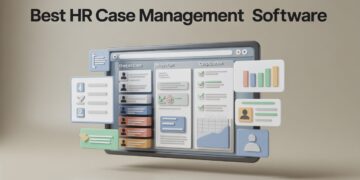As the workplace continues to evolve in response to technological advancement, economic pressures, and legislative reform, the structure and content of employment contracts must adapt accordingly. For 2025, several key updates to employment law are taking effect—particularly in the Netherlands and across the EU—that make it critical for employers to review, revise, and strengthen their employment contracts. Failing to keep up with these changes could expose businesses to legal risks, compliance penalties, and even reputational harm.
This guide offers a comprehensive look at what to include in an employment contract in 2025. Whether you’re a small business owner, an HR professional, or a legal advisor, you’ll find this resource essential in aligning your contracts with current legal expectations and best practices.
Legal Landscape for 2025: What’s Changing?
Minimum Wage Adjustments
In the Netherlands, the minimum wage is scheduled for incremental increases, with a benchmark of €14.40 per hour effective July 1, 2025. Employers must adjust compensation clauses accordingly to remain compliant. This change affects all employees aged 21 and older and applies to full-time and part-time positions alike.
Pay Transparency Directive
The EU Pay Transparency Directive mandates that, by June 7, 2026, employers must disclose salary ranges in job postings and provide justification for pay disparities. Although full implementation is in 2026, employers are advised to begin aligning their employment practices in 2025. Including salary bands in employment contracts is a practical starting point.
Non-Compete Clauses
New legislation proposes stricter requirements for non-compete clauses, including the necessity for employer justification and compensation during the restrictive period—typically 50% of the employee’s last-earned salary. Contracts drafted in 2025 must adhere to these principles to ensure enforceability.
Zero-Hour Contracts
Zero-hour contracts are being phased out in the Netherlands. Employers will need to replace them with fixed-hour agreements that specify a minimum number of working hours. This move aims to provide more job security and predictability for employees.
Worker Classification
The Dutch Tax Authority is stepping up enforcement of proper worker classification. From 2025, if a freelancer or contractor earns under €36/hour, they may be presumed to be an employee, unless proven otherwise. Contracts must clearly define the employment relationship.
Remote Work and CO₂ Reporting
Employers with 100 or more employees will be required to monitor and report CO₂ emissions resulting from employee commutes. Also, the tax-free home working allowance is increased to €2.40 per day in 2025. Employment contracts should reflect these updates for remote and hybrid roles.
Essential Components of Employment Contracts in 2025
Parties Involved
Clearly define both the employer and employee, including full legal names and business registration numbers if applicable. Accuracy here ensures that the contract is legally binding and enforceable.
Job Description
Specify the job title, duties, responsibilities, and reporting lines. A detailed job description helps to manage expectations and provides legal clarity in disputes.
Contract Type and Duration
State whether the contract is fixed-term or indefinite. Include start and end dates if applicable. Under Dutch law, fixed-term contracts are limited to a maximum of three within three years, unless a longer break period is observed.
Working Hours
Include the agreed number of weekly hours, work schedule, and any flexibility provisions. This is particularly important as zero-hour contracts are eliminated.
Compensation and Benefits
Detail the gross salary, pay frequency (e.g., monthly), bonuses, and any variable compensation. Also, list statutory and non-statutory benefits like pensions, travel reimbursements, and remote work allowances.
Vacation and Leave Entitlements
Include holiday leave (minimum of four times the number of working days per week), sick leave, parental leave, and other special leave types as per Dutch labor law.
Probationary Period
The probation period, if any, must be clearly stated and should not exceed one month for fixed-term contracts under two years or two months for indefinite contracts.
Termination and Notice
Provide conditions for termination by both parties, including notice periods, severance pay, and resignation protocols. Ensure this aligns with Dutch civil law and any collective labor agreements.
Confidentiality and Data Protection
Include a confidentiality clause to protect company secrets and sensitive data. Also, ensure GDPR compliance by describing how employee data will be handled.
Intellectual Property Rights
State who owns the intellectual property created during employment. In most cases, IP rights are assigned to the employer, but this should be explicitly stated.
Non-Compete and Non-Solicitation
Specify the scope and duration of any non-compete or non-solicitation clauses. As of 2025, these clauses must be reasonable in scope, justified by business needs, and often include financial compensation.
Secondary Employment
Employers can no longer impose a blanket ban on secondary employment unless there’s a justifiable business reason, such as conflict of interest or performance concerns.
Dispute Resolution and Governing Law
Specify the applicable jurisdiction (e.g., Dutch law) and dispute resolution method—mediation, arbitration, or court.
Training and Development
Outline any employer obligations to provide training, as required under EU law. This includes access to relevant courses or upskilling opportunities.
Amendment Clause
The agreement should state that any changes must be made in writing and agreed to by both parties.
Specific Contractual Updates Required in 2025
Aligning with the Pay Transparency Directive
Although the directive will be enforced from mid-2026, early compliance is wise. Contracts should include salary bands and information on pay review timelines. This helps reduce gender and diversity pay gaps and enhances transparency.
Transition from Zero-Hour to Fixed-Hour Agreements
Contracts must now guarantee minimum working hours, even in flexible roles. Include overtime policies and clarify how shift changes are managed.
Non-Compete Clause Justification
Employers must justify why a non-compete clause is necessary for the role. For example, protecting sensitive client relationships or intellectual property. Failure to justify may render the clause invalid.
Remote Work Provisions
Include expectations for remote work days, communication protocols, and the homeworking allowance. Specify any employer-provided equipment or technology.
CO₂ Emissions Reporting
For larger organizations, it’s advisable to include a clause or appendix explaining the employee’s role in tracking commuting data for environmental reporting.
Writing Tips for Clear, Effective Contracts
Use Simple, Legal Language
Avoid legalese wherever possible. The contract should be understandable to non-lawyers while maintaining legal accuracy.
Be Specific and Detailed
Generalized or vague clauses can be interpreted against the employer in legal disputes. Define terms like “reasonable notice” or “confidential information.”
Tailor Contracts by Role
Customize clauses for different positions. For example, sales staff may need stricter non-compete clauses compared to administrative staff.
Review Annually
Make annual contract reviews part of your HR compliance routine, especially in years like 2025 with major regulatory changes.
Sample Clauses Compliant with 2025 Laws
Sample: Non-Compete Clause
“The Employee agrees that for a period of 12 months following termination of this agreement, they shall not engage, directly or indirectly, in any business activities that compete with the Employer’s core operations within the territory of the Netherlands. The Employer shall provide monthly compensation equal to 50% of the Employee’s last gross salary during this period. This clause is necessary to protect confidential information and client relationships.”
Sample: Remote Work and Reimbursement
“The Employee shall be permitted to work from home up to three days per week. For each day worked remotely, the Employee will receive a tax-free allowance of €2.40. The Employer will provide necessary IT equipment and cover standard communication expenses.”
Frequently Asked Questions (FAQs)
Q1. What major legal changes affect employee contracts in 2025?
Key changes include minimum wage increases, stricter rules on non-compete clauses, the end of zero-hour contracts, and preparation for the EU Pay Transparency Directive.
Q2. Are employers still allowed to use zero-hour contracts?
No, these contracts are being phased out in favor of minimum-hours agreements. Employers must guarantee a base level of working hours.
Q3. How should we incorporate remote work into contracts?
Include clauses about remote work expectations, eligibility, communication rules, and reimbursements such as the €2.40 daily allowance.
Q4. What is required to make a non-compete clause enforceable in 2025?
It must be justified with a clear business need, limited in duration and geographic scope, and include financial compensation for the restricted period.
Q5. Should employment contracts include information about pay ranges?
Yes, under the Pay Transparency Directive, salary bands and pay equity explanations are strongly encouraged to be included by 2025.
Conclusion
The legislative landscape for employment law in 2025 brings both challenges and opportunities. Updating employment contracts to meet these evolving standards is no longer optional—it is a legal and strategic imperative. Businesses must be proactive in understanding what’s required and ensure that each employment agreement reflects modern labor expectations, industry practices, and regulatory mandates.
From abolishing zero-hour contracts and enforcing pay transparency to regulating non-compete clauses and incorporating remote work policies, employers need to take a comprehensive, future-focused approach. Use this guide as your roadmap to drafting compliant, transparent, and enforceable employment contracts.
“Employee Contracts: What to Include in 2025” is a timely and essential consideration for any organization looking to stay competitive and compliant in the modern labor market.












